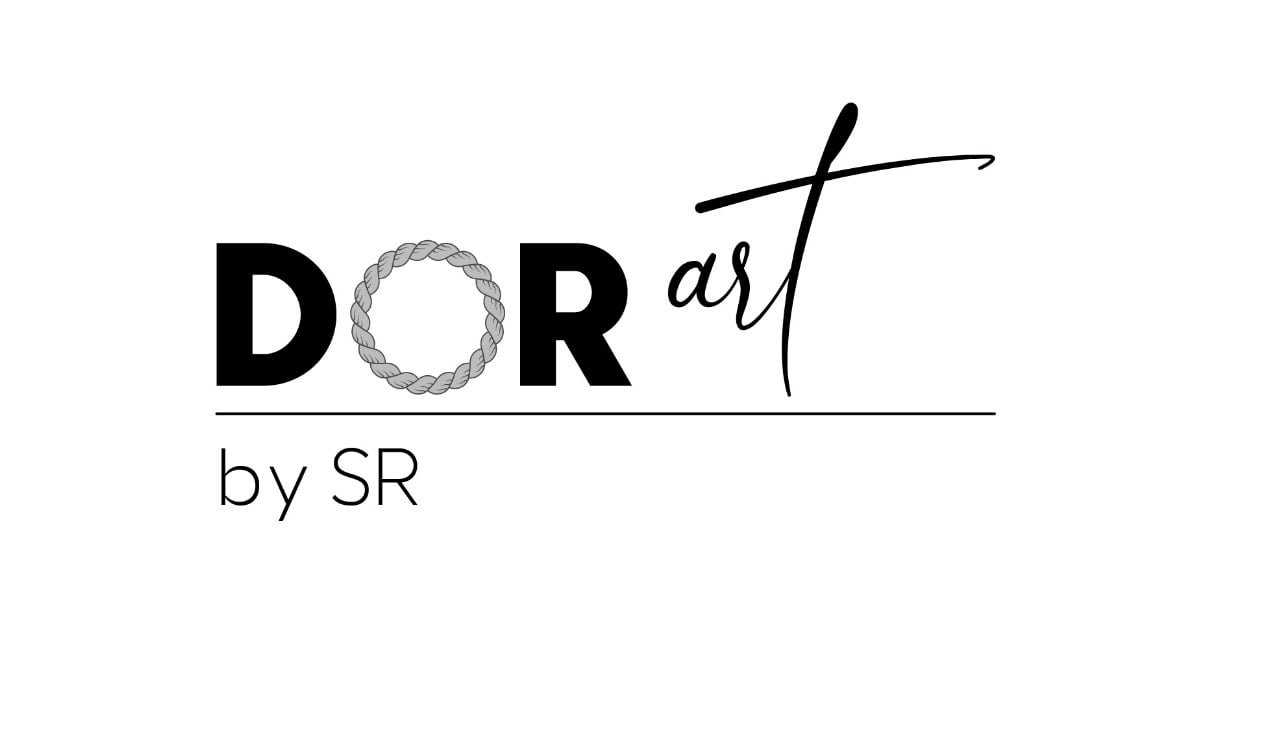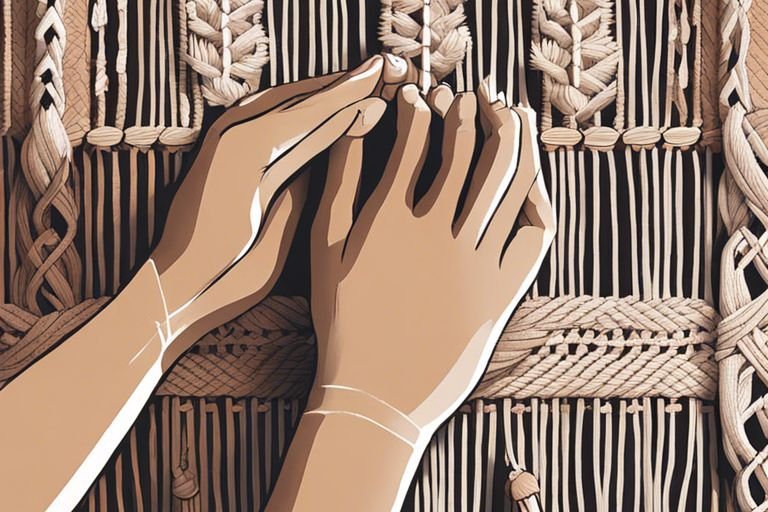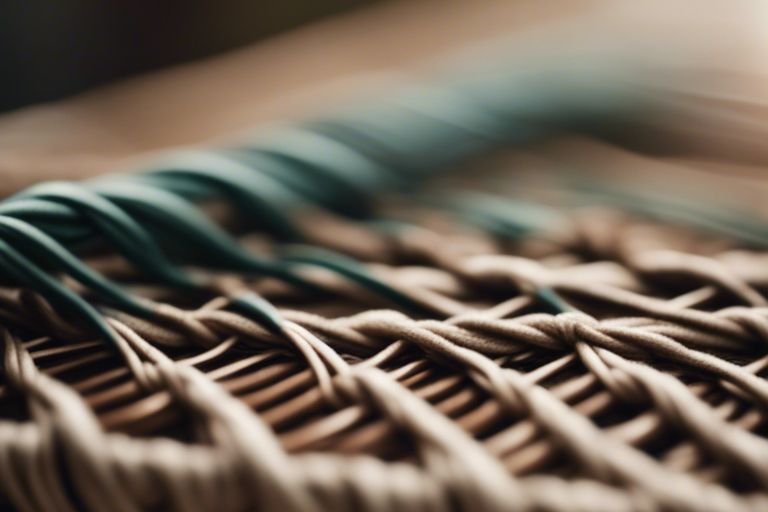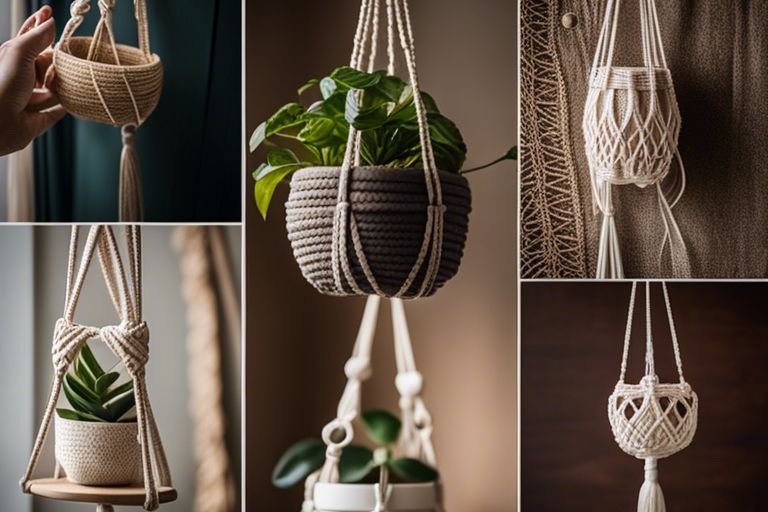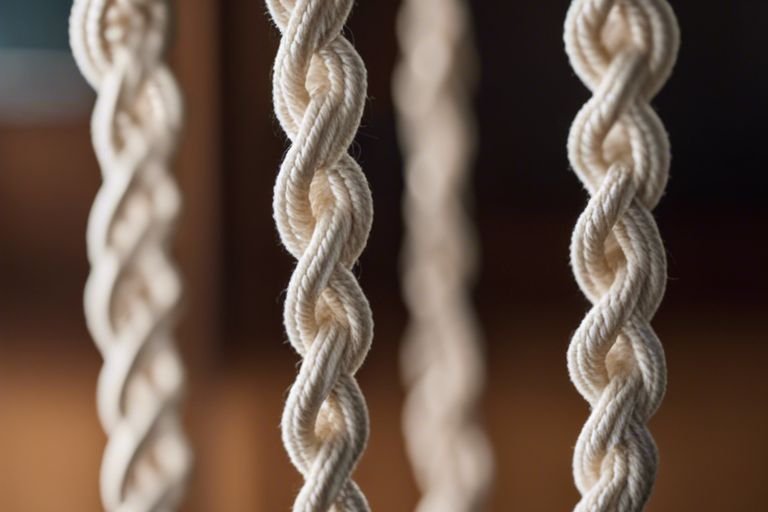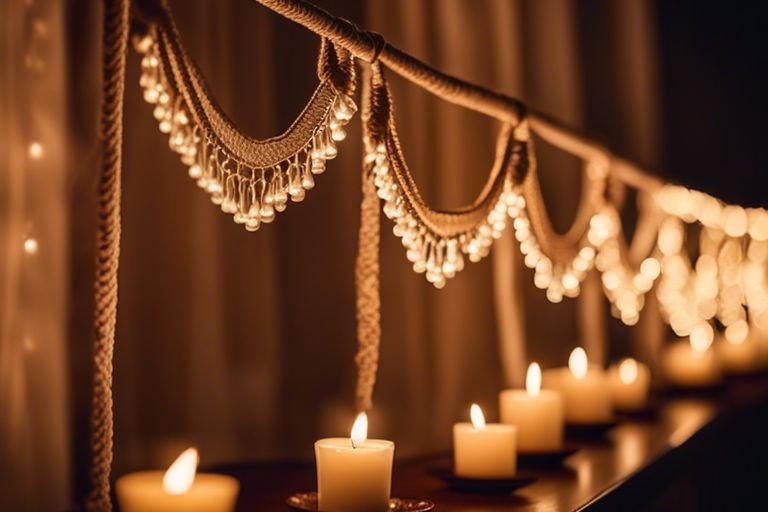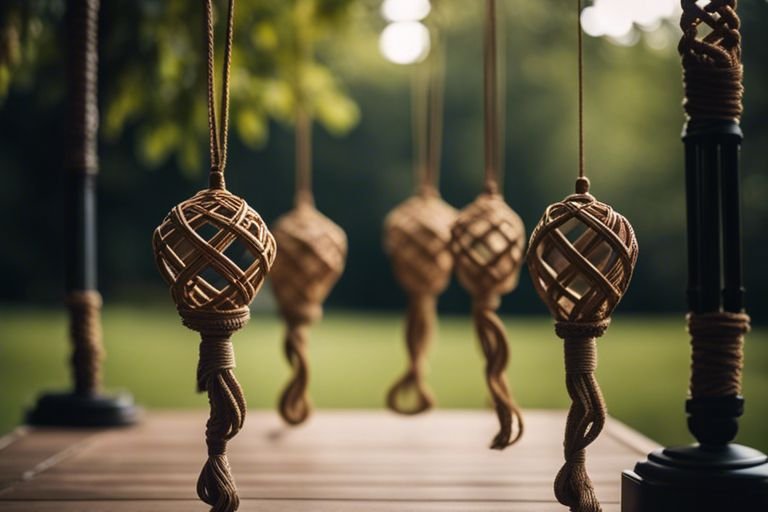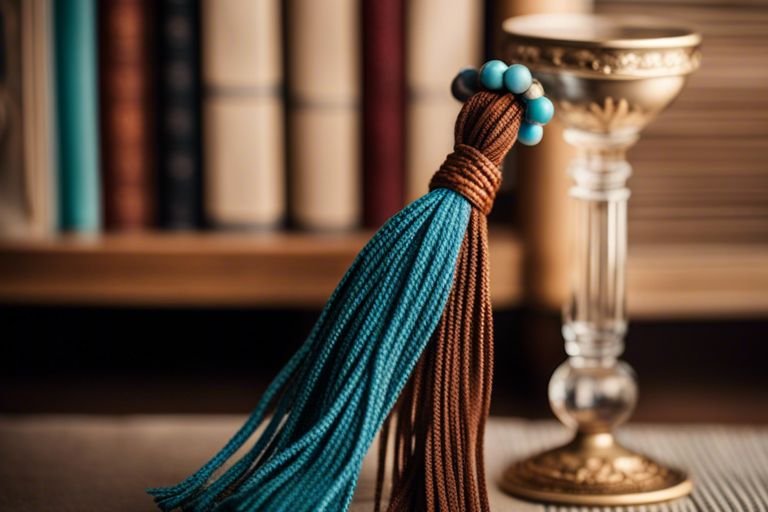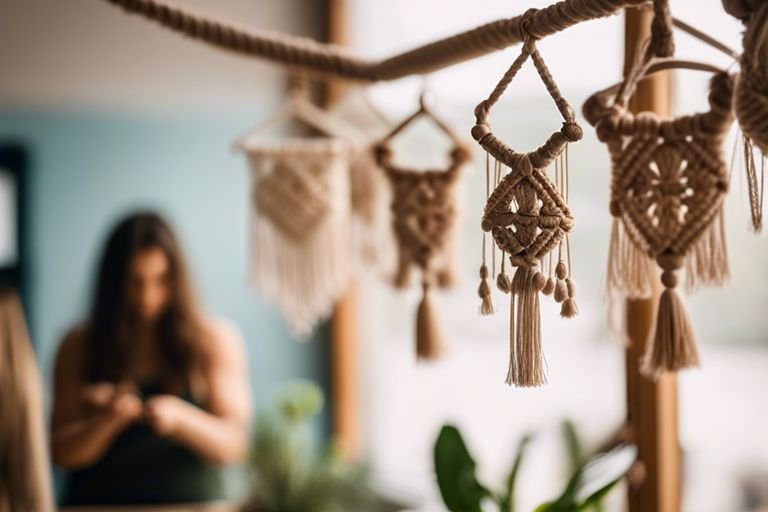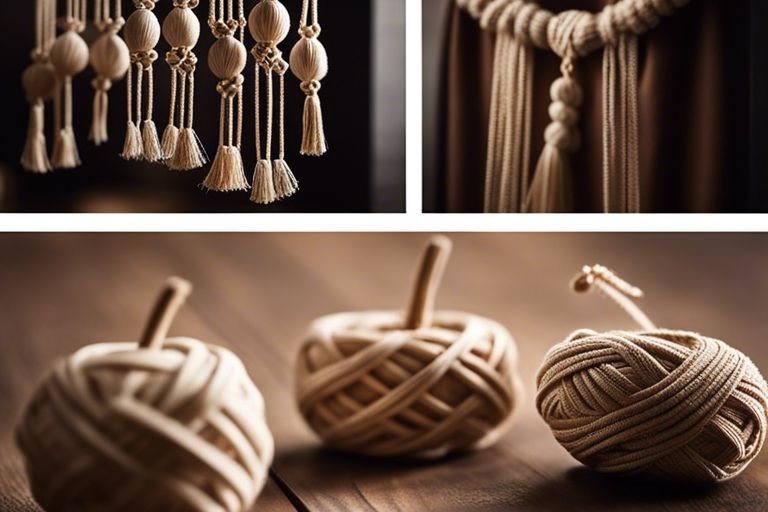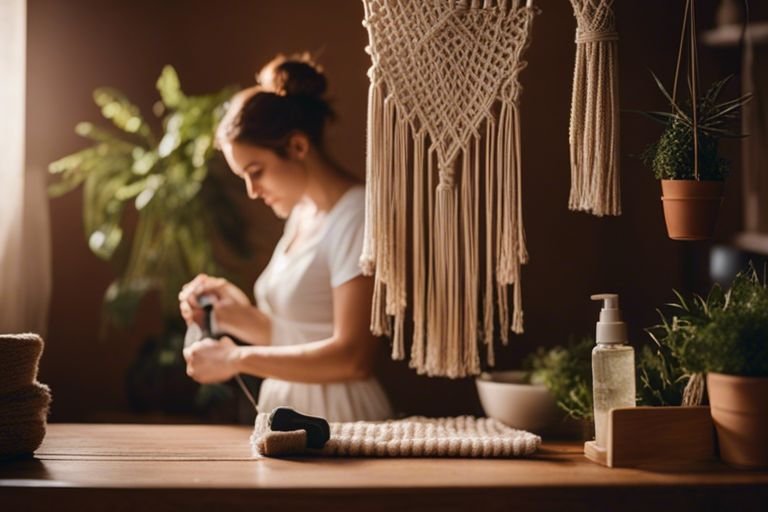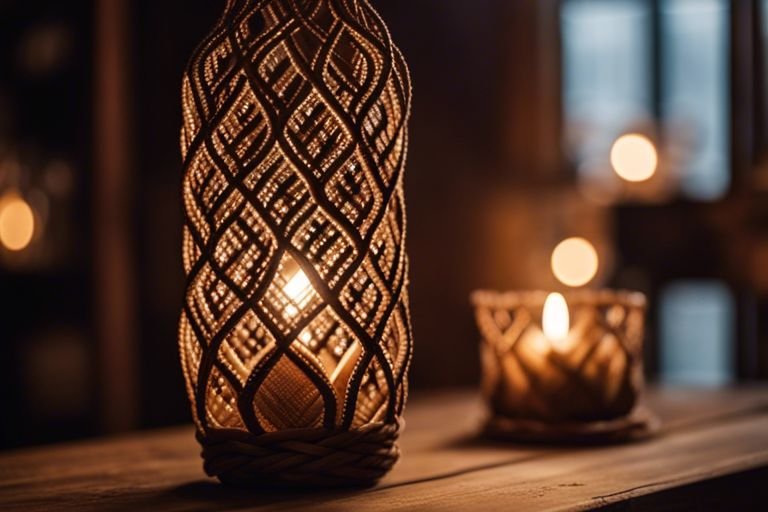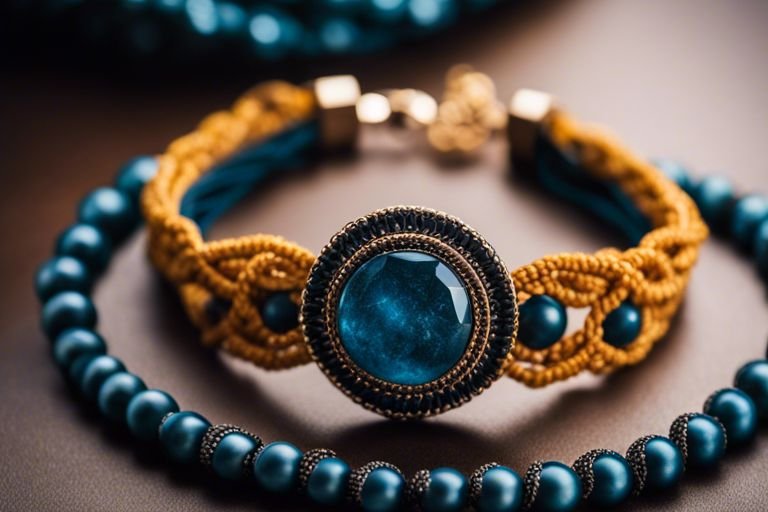Macrame is a versatile form of textile-making using knotting rather than weaving or knitting. Originating from a 13th-century Arabic weavers’ word migramah, the craft achieved significant popularity in the Western world during the 1970s. Macrame techniques involve the use of various types of knots, such as the half hitch, square knot, and gathering knot. Inorder to create intricate and decorative patterns. Understanding the different types of knots and their applications is crucial for mastering the art of macrame.
To learn more about the history of macrame, you can check out this informative Wikipedia article. Macrame techniques encompass a wide range of skills and patterns. It is suitable for both beginners and experienced crafters. With the right tools and materials, individuals can create anything from simple plant hangers to intricate wall hangings and clothing.
Understanding the fundamentals of macrame is essential for achieving professional-looking results. Mastering the techniques and intricacies of this craft is essential for success. Whether you take it as a hobby or want to become professional.

Essential Materials
Obviously, a crucial aspect of mastering macrame techniques is having the right materials at your disposal. While the specific materials you need can vary depending on the project, there are some fundamental supplies that every macrame artist should have on hand. One essential resource for beginners is learning the basic knots. For more information, you can refer to How to Macramé: 7 Basic Knots to Master.
Types of Cords and Their Properties
When it comes to macrame, the type of cord you use can greatly impact the outcome of your project. Different cords have varying properties such as thickness, texture, and durability. Recognizing the unique properties of each type of cord is essential for choosing the right one for your project. Importantly The information should be broken down into
with 2 columns and 5 rows, Start the text with word ‘Their’
- Natural fibers: such as cotton, jute, and hemp. These cords are eco-friendly, soft, and great for intricate designs.
- Synthetic fibers: such as nylon and polyester. These cords are durable, strong, and often come in a variety of colors.
- Specialty cords: such as leather, suede, or metallic. These cords add a unique touch to your macrame projects and can create stunning visual effects.
Other Necessary Tools and Accessories
Properties
To enhance your macrame experience, there are a few other necessary tools and accessories that can make the process more efficient and enjoyable. Some of these tools include a macrame board or rack for securing your work, a pair of sharp scissors for cutting cords, and a tape measure for precise dimensions. In addition, having a variety of beads and embellishments on hand can add a personal touch to your creations. To include some keywords from list above.
- Macrame board or rack
- Sharp scissors
- Tape measure
- Beads and embellishments
Fundamental Knots of Macrame
Clearly, to master the art of macramé, it is essential to have a strong understanding of the fundamental knots that form the basic building blocks of this intricate craft. These knots are the foundation upon which all macramé designs are built, and mastering them is crucial to creating beautiful and intricate pieces of macramé art.
Square Knot
Square knot is one of the most fundamental knots in macrame. It is created by tying two half knots in opposite directions, resulting in a flat, symmetrical knot. To create a square knot, take the left working cord and cross it over the right working cord. Then, bring the right working cord over the left cord and through the loop created on the left. Pull both cords to tighten the knot.
To create more intricate designs, the square knot can be used in various combinations and patterns, allowing for endless creative possibilities. The square knot is the building block for many other knots in macramé and is an essential skill for any aspiring macrame artist.
Lark’s Head Knot
To create a Lark’s Head Knot, fold a cord in half and place the folded part over a rod or another cord. Then, pull the loose ends of the cord through the loop and tighten to secure the knot. The Lark’s Head Knot is commonly used to attach cords to a dowel or ring, serving as the starting point for many macrame designs. This versatile knot is the perfect starting point for many macramé projects and is a fundamental skill for any macramé enthusiast.
Knots such as the Lark’s Head Knot serve as the foundational elements for more complex macrame patterns and designs, allowing artists to create beautiful and intricate pieces using these basic techniques.
Half Hitch and Double Half Hitches
Knots such as the half hitch and double half hitches are crucial for creating intricate and detailed macrame designs. To perform a half hitch, simply loop the working cord over the holding cord and pull it through the loop, creating a simple and versatile knot that can be used in a variety of macrame patterns.
Double half hitches are created by repeating the half hitch in the same direction, resulting in a more secure and stable knot. Mastering these knots allows for the creation of complex and beautiful macrame designs, making them essential skills for any macrame artist.
The meticulous use of half-hitch and double half-hitch knots in macrame allows artists to create stunning textures and patterns, opening up a world of creative possibilities for macramé enthusiasts. These knots play a crucial role in the art of macrame, allowing artists to bring their unique vision to life through intricate and detailed designs.
Overhand and Loop Knots
Knots such as the overhand and loop knots are foundational elements in macrame, adding depth and dimension to various designs. The overhand knot is created by simply passing one end of the cord over and then under the other, creating a simple and versatile knot that is commonly used in macrame patterns.
The loop knot is created by making a loop with the cord and passing one end through the loop, creating a secure and decorative knot that adds visual interest to macrame designs.
Plus, these knots provide essential structural support to macrame designs, allowing artists to create intricate and complex patterns with ease. The overhand and loop knots are essential for any macrame artist looking to bring their designs to the next level, adding depth and complexity to their creations.
Courtesy by: Majestic Macrame
Basic Macrame Techniques
Despite its intricate and beautiful appearance, macrame is actually quite simple to learn. The basic techniques involve using various types of knots and stitches to create intricate patterns and designs. Whether you are a beginner or an experienced crafter, understanding these fundamental techniques is essential for mastering the art of macrame.
Knotting Patterns
On the surface, knotting patterns may seem overwhelming, but they are quite straightforward once you familiarize yourself with the basic knots. Common knots used in macramé include the square knot, the lark’s head knot, and the spiral knot. By mastering these foundational knots, you can easily create a variety of beautiful patterns and designs.
Flat vs. Spiral Stitching
On the topic of flat vs. spiral stitching, it’s important to understand that each technique produces a different effect in your macramé projects. Flat stitching creates a smooth, uniform appearance, while spiral stitching adds a twisted, textured look to your work. Each method offers its own unique aesthetic and it’s up to you to choose which is best suited for your project.
Spiral stitching can create a mesmerizing, 3-dimensional effect in your macramé pieces, adding depth and visual interest. By incorporating spiral stitching into your designs, you can create eye-catching patterns and intricate textures that will elevate your macramé projects to the next level.
Adding Beads and Embellishments
Stitching beads and other embellishments into your macramé projects can take your work to the next level. By carefully integrating beads and embellishments into your stitches, you can add depth, sparkle, and visual interest to your creations. Whether you prefer to use natural wooden beads or colorful glass beads, the possibilities for enhancing your macramé pieces are endless.
For instance, adding beads and embellishments to your macramé wall hangings can create a stunning focal point in any room. By strategically placing beads and embellishments within your knots and stitches, you can create a one-of-a-kind piece that showcases your creativity and attention to detail.
Techniques for Creating Texture
Adding texture to your macrame pieces can elevate the overall look and feel of your projects. Techniques such as fringing, looping, and twisting can be used to create intricate textures that add depth and visual appeal to your work. By experimenting with different techniques, you can take your macramé creations from simple to sophisticated.
Techniques for creating texture in macrame allow you to play with dimension, movement, and visual interest. By skillfully incorporating these techniques into your designs, you can create stunning pieces that are sure to captivate and impress.

Crafting Macrame Projects
For those looking to explore the world of macramé, there are various crafting opportunities to delve into. Whether you are a beginner or an experienced artisan, there are a variety of projects that can be created using macramé techniques.
Wall Hangings and Plant Hangers
Wall hangings and plant hangers are popular macramé projects that add a touch of bohemian flair to any space. These projects often involve intricate knotting techniques to create beautiful and functional pieces. Wall hangings can serve as stunning statement pieces. While plant hangers provide a stylish way to display greenery in your home.
For those interested in creating wall hangings and plant hangers, there are a wide range of beautiful patterns and designs available on the internet.
Jewelry and Fashion Accessories
For fashion-forward individuals, macrame offers the opportunity to craft unique jewelry and fashion accessories. From bracelets and necklaces to earrings and handbags, the possibilities are endless. Macramé jewelry is known for its intricate knotting and weaving techniques. It results in wearable art that is both stylish and timeless.
Plus, creating your own macramé jewelry and fashion accessories allows you to incorporate sustainable materials and eco-friendly practices into your personal style, making it a great choice for those who are environmentally conscious.
Home Decor Items
Crafting home decor items with macrame techniques can add a touch of handmade charm to any living space. From throw pillows and curtains to table runners and room dividers, macrame can be used to create a wide array of decor items. The unique texture and visual appeal of macrame adds warmth and character to any room.
Any space can benefit from the addition of macrame home decor items, whether you prefer a modern, minimalist aesthetic or a more bohemian, eclectic vibe. With the ability to customize colors, sizes, and patterns, macrame offers endless opportunities to create personalized decor pieces that suit your home perfectly.
Large-Scale and Outdoor Projects
Plant hangers aren’t the only way to incorporate macramé into outdoor spaces; large-scale projects such as hammocks, room dividers, and even outdoor furniture can also be created using macramé techniques. These projects require sturdy materials and detailed knotting to ensure durability and stability.
This allows you to create unique outdoor living spaces that are both stylish and functional, enhancing your connection to nature and the great outdoors. Whether you have a spacious backyard or a cozy balcony, large-scale macramé projects can transform your outdoor area into a stunning oasis.

Advanced Macrame Techniques
Keep honing your macramé skills with these advanced techniques. Add a touch of complexity to your designs with the following:
- Intricate Patterns and Shapes
- Mixing Materials
- Dyeing and Color Variations
- Working with Different Cord Thicknesses
Intricate Patterns and Shapes
For those looking to take their macrame projects to the next level, intricate patterns and shapes can add a stunning visual appeal. Utilizing advanced knotting techniques and more intricate designs, macrame artists can create eye-catching pieces that are both visually striking and technically impressive.
Mixing Materials
Incorporating different types of cords, such as cotton, jute, or even metallic threads, can add texture and depth to your macramé creations. For instance, combining various materials can create a unique contrast and aesthetic appeal in your designs.
For instance, incorporating metallic threads can add a touch of glamour and sophistication to your macrame pieces, while mixing different types of cords can create interesting textural effects.
Dyeing and Color Variations
To add a personalized touch to your macrame projects, consider experimenting with dyeing techniques and color variations. Explore the use of natural dyes or fabric paints to achieve custom color palettes and gradients in your work. Plus, playing with colors can evoke different moods and complement various interior styles.
Working with Different Cord Thicknesses
Cord thickness can significantly impact the overall look and feel of a macrame project. By experimenting with different cord thicknesses, artists can create pieces with varying levels of intricacy and texture. Thicknesses can also affect the durability and sturdiness of your macramé creations, allowing for a more customized and tailored approach to your designs.
Tips for Successful Macrame Projects
Your macrame projects can be successful with the right tips and techniques. Here are some tips to help you achieve the best results in your macrame projects.
Maintaining Consistent Tension
Successful macrame projects require consistent tension throughout the entire project. This can be achieved by continuously adjusting the tension as you work, making sure the knots are secure and evenly spaced. Proper tension is key to creating a neat and professional-looking macrame piece.
Any inconsistent tension can lead to a lopsided or uneven final product, so be sure to check and adjust the tension regularly as you work on your project.
Measuring and Preparing Cords
An important aspect of successful macrame projects is measuring and preparing the cords properly. Ensure that all the cords are cut to the correct length before starting the project. It must be prepared for the specific knotting techniques you will be using.
Plus, it is essential to select high-quality cords that are strong and durable to ensure the longevity of your macrame project. Using the right type of cord for your project is crucial for achieving the best results.
Finishing Touches and Trimming
Tension plays a significant role in the finishing touches of a macrame project. Once the knots are all in place, it is essential to ensure that the tension is consistent throughout the piece to maintain its shape and form. This step is crucial for the final appearance of the macrame project.
Trimming any excess cords and fringes is the finishing touch that can elevate the overall look of your macrame project. Pay attention to detail when trimming to ensure a clean and polished final product.
Troubleshooting Common Issues
One common issue in macrame projects is the occurrence of knots coming undone or cords becoming tangled. With proper techniques, you can avoid these issues easily.
With patience and practice, you can overcome any challenges that arise during the macrame process. Regularly inspecting your work and addressing potential issues as they arise will lead to successful and satisfying results.
Conclusion
Drawing together the various macrame techniques, it is clear that this ancient art form is both diverse and versatile. From simple knots and patterns to more complex designs, the possibilities with macrame are endless. Whether creating intricate wall hangings, plant hangers, or jewelry, mastering these techniques allows for the creation of beautiful, intricate designs that add a touch of bohemian elegance to any space.
Learning macrame techniques requires patience and practice, but the end results are well worth the effort. With the resurgence of boho-chic and minimalist interior design trends, macrame has once again found its place as a popular and timeless craft. By understanding and utilizing the various techniques, individuals can create stunning pieces that showcase their creativity and artistic flair.
FAQ
Q: What is macrame?
A: Macrame is a craft that involves creating decorative and functional forms by knotting cord.. It’s a versatile technique that can be use. In order to make anything from wall hangings and plant hangers to jewelry and accessories.
Q: What types of knots commonly use in macrame?
A: The most commonly used knots in macrame are:
- The square knot
- Half knot
- Double half-hitch.
Q: What materials are typically used in macrame?
A: Macrame can be made using a wide variety of materials including
- Cotton cord.
- Nylon cord.
- Jute.
- Hemp.
- Yarn.
Different materials can give the finished piece a different look and texture. So the choice of material is an important consideration when starting a macrame project.
Q: Is macrame difficult to learn for beginners?
A: Macrame is easy for beginners with a bit of patience and practice. Starting with simple projects and gradually progressing to more complex designs can help beginners build their skills and confidence in the craft. There are also many tutorials and resources available online to help beginners learn macrame techniques.
Q: What are some common macrame projects for beginners to start with?
A: Beginners can start with simple projects like a basic wall hanging, plant hanger, or a keychain to practice the fundamental knots and techniques. As they become more comfortable with the basics, they can then move on to more advanced projects such as intricate wall art, jewelry, and home decor items.

